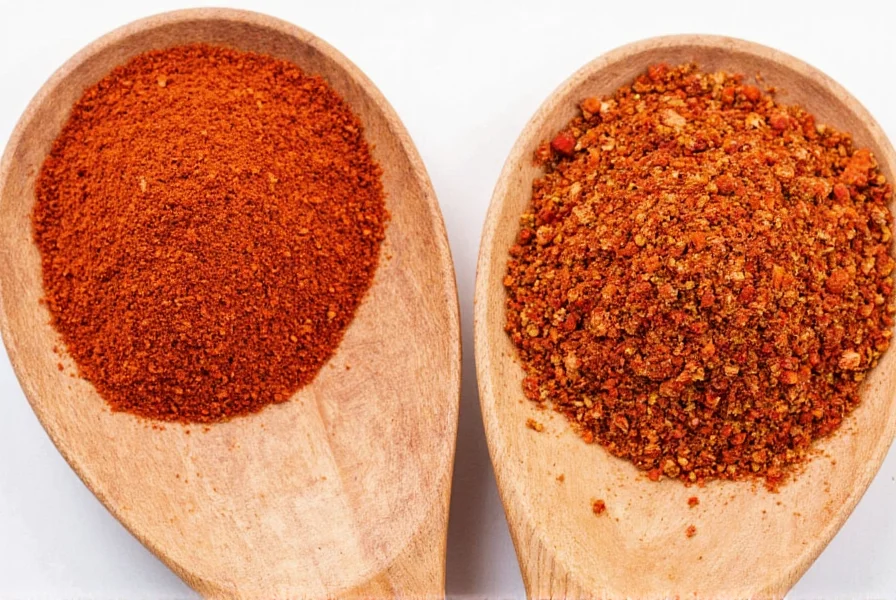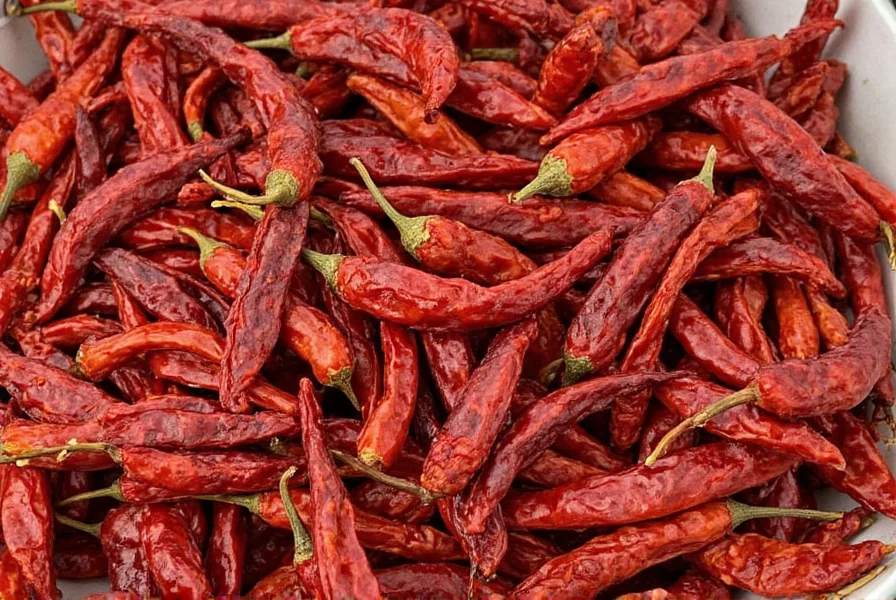5 Spicy Secrets of the Dried Ancho Chile Pepper You Can’t Ignore!
Table of Contents
- Introduction: The Mellow Heat of Mexico
- What is a Dried Ancho Chile Pepper?
- Heat Level & Flavor Profile
- Cooking with Ancho Peppers: Tips and Tricks
- Buying Guide: How to Choose the Best Ancho Chiles
- Delicious Recipes Featuring Ancho Peppers
- Storage: Keep Your Peppers Fresh Longer
- Frequently Asked Questions
- Conclusion
Introduction: The Mellow Heat of Mexico
If you’ve ever had mole sauce or enchilada filling that made your mouth tingle just right, chances are you’ve tasted the magic of the dried ancho chile pepper. This wrinkled red wonder is the backbone of countless Mexican dishes and brings a unique depth of flavor that’s both smoky and slightly sweet. Whether you're a home cook experimenting with spices or a pro chef building complex sauces, understanding how to work with ancho peppers can elevate your culinary game. Let’s dive into what makes this chili so special—and how to use it like a pro.
What is a Dried Ancho Chile Pepper?
The dried ancho chile pepper is simply the dried version of the poblano pepper. When fresh, it's called a poblano; when dried, it becomes an ancho. The name "ancho" means wide in Spanish, referring to its broad, flat shape.
This transformation from green to dark reddish-brown adds layers of complexity to the flavor profile. While poblanos have a grassy freshness, anchos bring deep earthiness, a hint of cocoa, and a gentle heat that doesn’t overwhelm your palate. They’re versatile, easy to find, and perfect for anyone looking to add authentic Mexican flavor to their cooking.
Heat Level & Flavor Profile
One of the best things about ancho peppers is that they pack flavor without packing too much punch. On the Scoville scale—which measures spiciness—they typically range from 1,000 to 2,000 units. For reference, jalapeños range from 2,500 to 8,000. So if you’re looking for something with a kick but not fire, anchos are your friend.
Flavor Breakdown:
- Earthy: Think forest floor and rich soil.
- Fruity: There’s a subtle berry note lurking beneath the surface.
- Smoky: Especially when toasted, which enhances the natural oils.
- Slightly Sweet: Like sun-dried tomatoes with a touch of raisin-like sweetness.
If you want a visual comparison of how anchos stack up against other popular chilies, take a look at this handy table:
| Pepper | Scoville Units | Flavor Notes |
|---|---|---|
| Ancho | 1,000–2,000 | Earthy, fruity, smoky, slightly sweet |
| Jalapeño | 2,500–8,000 | Grassy, bright, crisp |
| Guajillo | 2,500–5,000 | Tangy, tea-like, berry notes |
| Cayenne | 30,000–50,000 | Sharp, biting, fiery |

Cooking with Ancho Peppers: Tips and Tricks
Ready to get cooking? Here’s how to unlock all that amazing flavor hiding in those crinkly skins:
Step-by-Step: Preparing Ancho Peppers
- Rinse them off: These are dried, so dust or dirt may be present. A quick rinse under warm water removes any debris.
- Toast them lightly: Warm a dry skillet over medium heat and toast each side for about 30 seconds. Don’t burn them—just enough to release the oils and intensify the aroma.
- Rehydrate for sauces: To make pastes or sauces, soak the peppers in hot water for 20–30 minutes until soft.
- Blend and strain: After soaking, blend the peppers with some of the soaking liquid, garlic, vinegar, or broth. Strain through a fine mesh sieve for a silky-smooth sauce base.
Pro Tip: Add a pinch of cumin or a splash of lime juice to enhance the natural fruitiness of the pepper.
Best Uses for Dried Ancho Chile Peppers
- Mole sauces
- Enchilada sauces
- Chili con carne
- Dry rubs for meats
- Spice blends (like adobo powder)
Buying Guide: How to Choose the Best Ancho Chiles
Not all dried ancho peppers are created equal. Here’s what to look for when buying them:
Things to Consider When Buying Ancho Peppers
| Factor | What to Look For | Why It Matters |
|---|---|---|
| Color | Deep reddish-brown | Indicates full ripeness and richer flavor |
| Texture | Leathery but pliable | Avoid overly brittle or moldy ones |
| Size | Large and wide | Larger peppers often have more flesh and less seed |
| Smell | Eartgy and aromatic | Avoid musty or off smells |
Top Brands & Products to Try
- La Morena Dried Ancho Chiles: Consistent quality, widely available, perfect for beginners.
- El Yeyo Organic Ancho Peppers: Great for health-conscious cooks and those who prefer organic ingredients.
- Trader Joe’s Bulk Ancho Peppers: Affordable and high quality—ideal for making homemade spice blends.

Delicious Recipes Featuring Ancho Peppers
Let’s put theory into practice! Here are a few recipes that showcase the versatility of ancho peppers:
1. Smoky Ancho Enchilada Sauce
- Soak 4 dried anchos in boiling water for 30 minutes.
- Blend with 1 clove garlic, 1/2 onion, 1 tsp cumin, and 1 cup chicken broth.
- Simmer for 10 minutes and use as a base for beef or cheese enchiladas.
2. Spiced Ancho Rub for Chicken
- Grind 2 dried anchos into powder.
- Mix with paprika, garlic powder, salt, and a touch of brown sugar.
- Rub onto chicken breasts before roasting or grilling.
3. Homemade Mole Negro
This classic Oaxacan dish uses ancho along with mulato and pasilla peppers. Toast, rehydrate, and blend with almonds, sesame seeds, chocolate, and spices for a sauce that’s unforgettable.
Storage: Keep Your Peppers Fresh Longer
Storing dried ancho peppers properly ensures they maintain their flavor and don’t go bad prematurely.
How to Store Dried Ancho Chiles
- Airtight containers: Store whole dried peppers in a sealed ziplock bag or glass jar.
- Cool, dark place: A pantry or cupboard works best. Avoid moisture and sunlight.
- Freezer storage: If you plan to keep them for longer than 6 months, freeze them in a sealed bag.
You can also grind them into powder for easier storage and quicker use. Just remember that ground spices lose potency faster, so label your jars with dates.
Frequently Asked Questions
Are ancho peppers hotter than jalapeños?
Nope! Jalapeños are generally hotter than ancho peppers. Anchors fall around 1,000–2,000 SHU, while jalapeños hit between 2,500–8,000 SHU.
Can I substitute ancho peppers with another chili?
Yes! Guajillos or pasillas offer similar flavor profiles. However, guajillos are slightly tangier, while pasillas tend to be darker and fruitier.
Do I need to remove the seeds?
It’s optional. The seeds do contain some heat, so if you want milder flavors, remove them. Otherwise, leave them in for extra spice and texture.
Conclusion
Whether you're simmering a rich mole sauce or giving grilled chicken a spicy twist, the dried ancho chile pepper is a powerhouse ingredient that deserves a spot in every spice lover’s pantry. With its balanced heat, deep flavor, and endless versatility, mastering the ancho can open doors to new levels of culinary creativity.
So next time you see those leathery red peppers in your local market or grocery store aisle, don’t pass them by. Grab a few, toast ‘em up, and let the flavor adventure begin!










 浙公网安备
33010002000092号
浙公网安备
33010002000092号 浙B2-20120091-4
浙B2-20120091-4